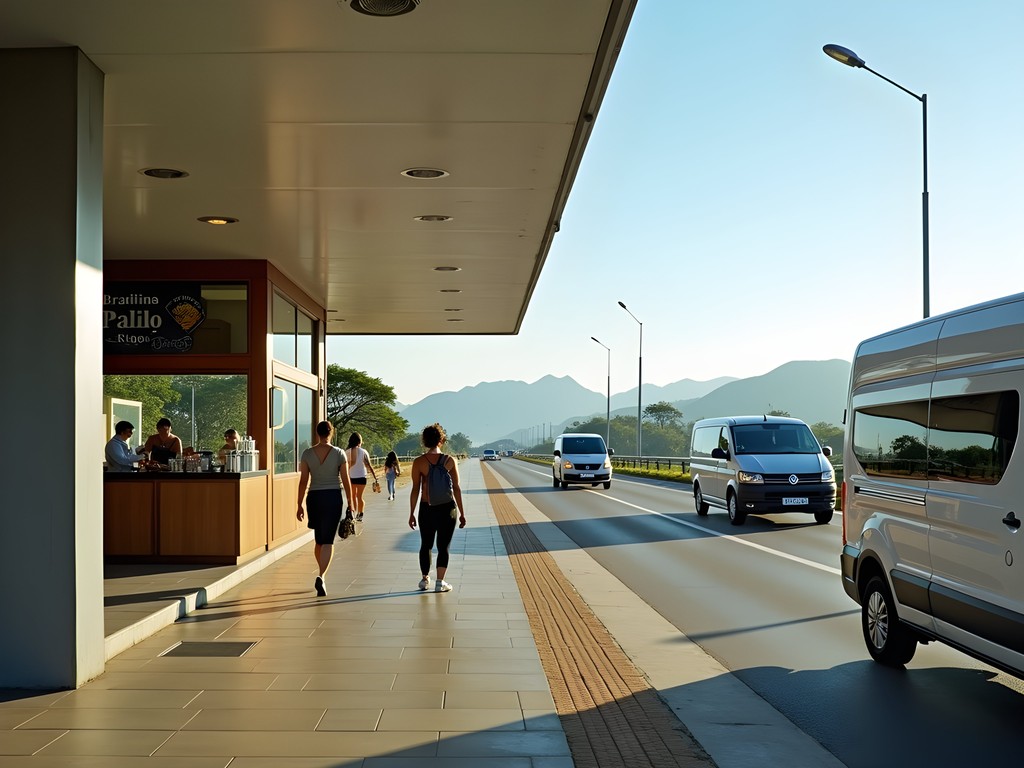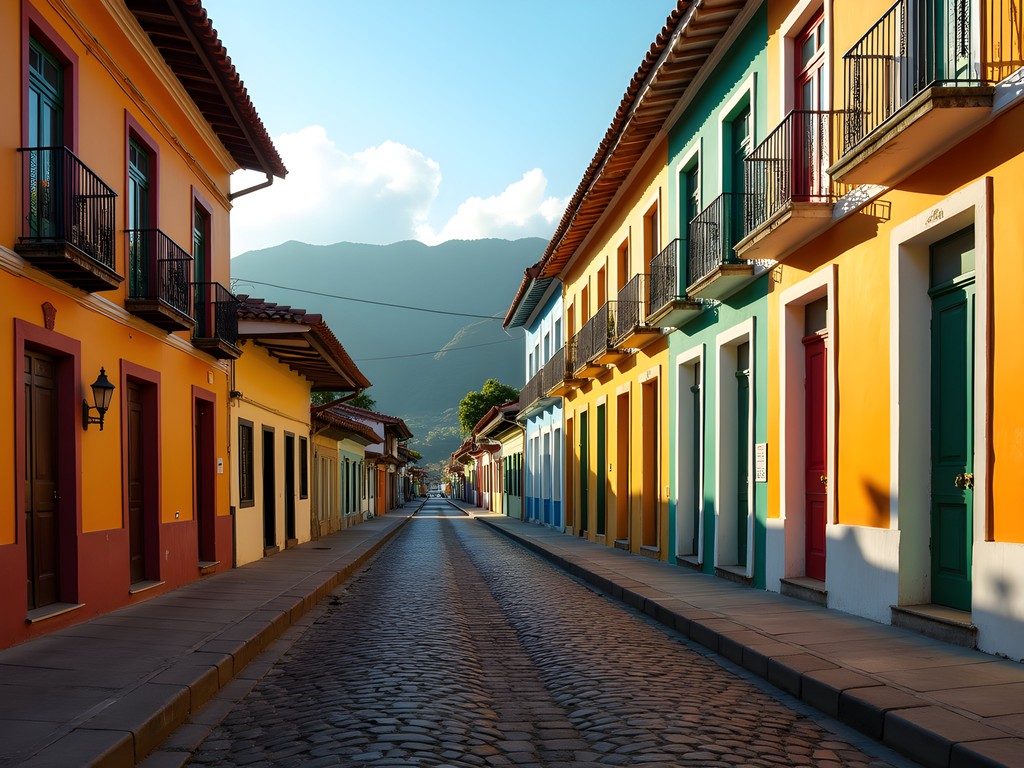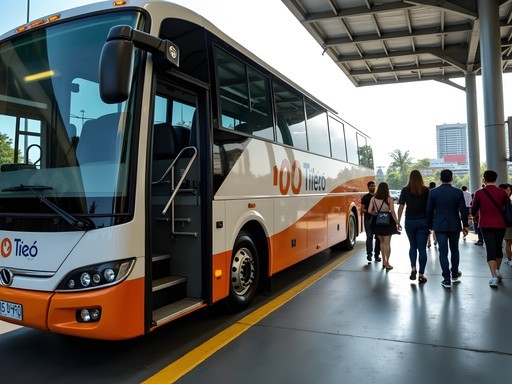Disclosure: This article contains affiliate links. We may earn a commission from purchases at no extra cost to you, which helps our travel content.
Standing in São Paulo's chaotic Tietê bus terminal with my medical pack slung over one shoulder, I found myself doing what I always do in unfamiliar territory—assessing my options with the same methodical approach I use during triage. The 430-kilometer journey to Rio de Janeiro lay ahead, and like many solo travelers, I wanted the sweet spot between affordability, safety, and experience. Brazil's two iconic metropolises—one a commercial powerhouse, the other a coastal paradise—are connected by multiple transportation arteries, each offering a different rhythm and perspective. As someone who's made this journey multiple times (once even with a sprained ankle after an overly ambitious hike in Cantareira State Park), I've experienced the full spectrum of options. Whether you're a first-timer looking to maximize your weekend escape or a budget-conscious adventurer seeking the most authentic experience, I'm breaking down the five best ways to make this classic Brazilian journey, complete with the kind of practical insights you won't find in standard guidebooks.
Option 1: Executive Bus – The Reliable Backbone
The executive bus system connecting São Paulo to Rio is what I call Brazil's circulatory system—reliable, consistent, and vital for keeping the country moving. Companies like Cometa and 1001 operate comfortable coaches departing from Tietê Bus Terminal (São Paulo) to Rodoviária Novo Rio (Rio de Janeiro) roughly every 30 minutes throughout the day and night.
My first time taking this route, I boarded a midnight departure, thinking I'd sleep through the journey. Instead, I found myself mesmerized by the transformation of landscapes visible even in the moonlight—from São Paulo's sprawling urban expanse to the lush valleys of the Serra do Mar coastal range. The executive buses feature reclining seats (some going nearly flat), air conditioning that actually works consistently, onboard bathrooms, and sometimes even Wi-Fi, though connectivity can be spotty through mountain passages.
The journey takes approximately 6-7 hours depending on traffic, which means an early morning departure gets you into Rio by early afternoon. At around 80-120 Brazilian Reais (approximately $15-25 USD), it's an economical option that doesn't sacrifice comfort. I always pack my neck pillow for overnight journeys—it's been a literal pain-saver during those winding mountain roads where sleep would otherwise be impossible.
What continually surprises me is how these buses embody a microcosm of Brazilian society. On my last trip, I shared a row with an elderly woman returning to her hometown outside Rio who insisted I try her homemade pão de queijo (cheese bread). These spontaneous connections are the threads that weave together the fabric of travel memories.

💡 Pro Tips
- Book tickets 1-2 days in advance during high season (December-February and July)
- Choose seats on the right side of the bus when heading to Rio for better mountain and eventually coastal views
- The front of the bus offers the smoothest ride, while the back has more legroom but more movement
Option 2: Budget Airlines – The Time-Saver
When time trumps experience, domestic flights between São Paulo and Rio are unbeatable. The flight itself is barely 45 minutes gate-to-gate—I've had emergency room assessments that took longer. Operating from São Paulo's Congonhas Airport (CGH) to Rio's Santos Dumont Airport (SDU), these flights offer spectacular aerial views, particularly when approaching Rio as the plane dips alongside Sugarloaf Mountain before landing next to Guanabara Bay.
Budget carriers like GOL, LATAM, and Azul compete fiercely on this route, driving prices down to as low as 200 Brazilian Reais ($40 USD) if booked well in advance. The real advantage here isn't just the short flight time but the airports' central locations. Congonhas is just 8km from São Paulo's downtown, while Santos Dumont sits right at the edge of Rio's Centro district, minutes from attractions like the Museum of Tomorrow and the historic Cinelândia square.
Having worked in emergency services, I'm habitually early for flights, which has saved me more than once from Brazil's occasionally capricious security lines. I always pack my gear in my trusty carry-on backpack, which fits perfectly in the overhead bins of even the smallest regional jets while keeping my essentials organized and accessible.
One caveat: flight delays are common, especially during afternoon thunderstorms in summer months. On my last trip, what should have been a quick hop turned into a three-hour wait as electrical storms circled São Paulo. The airports have improved their amenities significantly in recent years, but I still recommend downloading a good podcast or e-book as insurance against delays.

💡 Pro Tips
- Book at least 3-4 weeks ahead for the best fares
- Avoid checking bags if possible—domestic baggage handling can be slow
- Consider the time and cost of getting to/from airports when calculating the true value of flying
Option 3: Shared Transfer Services – The Comfortable Middle Ground
For solo travelers seeking the sweet spot between convenience and cost, shared transfer services have emerged as my go-to option in recent years. Companies like Brazil By Bus and Easy Transfer offer door-to-door service in comfortable minivans or SUVs that seat 7-10 passengers.
The process works beautifully in its simplicity: you're picked up from your accommodation in São Paulo and dropped at your destination in Rio. The vehicles are newer than most buses, with comfortable seating, charging ports, and drivers who typically speak at least basic English. At around 160-200 Brazilian Reais ($30-40 USD), it costs more than a bus but less than a flight when you factor in airport transfers.
What I appreciate most is the semi-private nature of these transfers. On my last trip, our group consisted of a Brazilian couple returning home, two German backpackers, and a family from Argentina. By the time we reached the halfway point rest stop, we were all sharing travel tips and restaurant recommendations. The Mi'kmaq have a concept called msit no'kmaq—'all my relations'—that recognizes how we're all connected. These shared journeys embody that spirit, creating temporary communities of travelers.
The journey takes about 6 hours with a short rest stop, usually at one of the roadside service stations where you can grab a quick meal and use clean restrooms. I always carry my insulated water bottle filled before departure—staying hydrated at higher elevations as you cross the mountains helps prevent the fatigue and headaches that can dampen your arrival experience.

💡 Pro Tips
- Book at least 24 hours in advance and confirm your pickup location and time
- Have your accommodation address in Rio written down clearly to show the driver
- These services typically run 2-3 times daily, with morning departures being most reliable
Option 4: The Scenic Coastal Route – For the Adventurous
For those with time to spare and adventure in their hearts, the coastal route between São Paulo and Rio offers what I consider the most soul-nourishing journey option. This isn't direct transportation—it's intentional slow travel that transformed my understanding of Brazil's Atlantic coastal culture.
The route works like this: from São Paulo, take a bus to the colonial town of Paraty (about 4 hours), spend at least one night there, then continue to Rio (another 4 hours) either by bus or boat depending on the season. What makes this detour worthwhile is experiencing the pristine beaches, remnants of Atlantic Rainforest, and the cultural richness of the Costa Verde (Green Coast).
Paraty itself deserves attention—a UNESCO World Heritage site with cobblestone streets so uneven they were designed to let seawater clean the roads during high tide. The architectural preservation here reflects a sacred geometry that resonates with many traditional designs I've encountered in indigenous communities across the Americas—a harmony with natural surroundings rather than dominance over them.
During my three-day coastal journey, I discovered hidden waterfalls just a short hike from the road where the water runs crystal clear through ancient granite. Local guides shared knowledge of medicinal plants that paralleled some of the traditional remedies my Mi'kmaq grandmother taught me—different species but similar applications, a testament to how indigenous wisdom often converges across continents.
If time allows, consider the boat transfer from Paraty to Ilha Grande before continuing to Rio. These vessels range from simple water taxis to more comfortable catamarans, with tickets available at the main pier in Paraty. Just remember to pack motion sickness remedies if you're prone—the Atlantic waters can be choppy.

💡 Pro Tips
- Allocate at least 2-3 days for this route to fully appreciate the coastal towns
- The historic CPTM train sometimes runs special tourist services along parts of this coast—check schedules in advance
- Pack a quick-dry towel and swimwear in your day bag—spontaneous beach stops are inevitable
Option 5: Private Transfer – The Flexible Luxury
When recovery time matters or when group dynamics make shared transportation challenging, private transfers offer the ultimate in flexibility. As someone who's occasionally traveled with a medical kit larger than my personal luggage (occupational hazard), I've appreciated the space and customization these services provide.
Private transfers typically use comfortable sedans or SUVs with professional drivers, many of whom double as informal guides. Prices range from 800-1200 Brazilian Reais ($150-230 USD) depending on the vehicle size and company, which becomes reasonable when split among 3-4 travelers. Companies like Brazil Private Tours and Rio Transfer offer online booking with English-speaking customer service.
The true value of private transfers lies in the freedom to customize your journey. On my last private transfer, I asked the driver to detour through the mountain town of Cunha, known for its pottery workshops and thermal springs. What would have been a simple A-to-B journey became an opportunity to explore a town rarely visited by international travelers, where I discovered a small wellness center using traditional Brazilian plant medicine in their treatments.
Private transfers also allow you to stop at viewpoints along the way—particularly valuable along the Serra do Mar mountain range, where panoramic vistas of the Atlantic Forest unfold in breathtaking fashion. For photography enthusiasts, these unscheduled stops can yield portfolio-worthy images without the time pressure of group transportation.
If you're traveling with specialized equipment or have mobility considerations, communicate these needs when booking. Most companies can accommodate specific requirements with advance notice. I travel with my camera backpack that contains both photography gear and emergency medical supplies—having space to keep this secure yet accessible during the journey provides peace of mind that mass transportation can't match.

💡 Pro Tips
- Request your driver in advance if you need English or other language skills
- Discuss any planned stops before departure so the driver can optimize the route and timing
- Confirm whether tolls are included in your quoted price—the São Paulo to Rio route has several
Final Thoughts
The path you choose between São Paulo and Rio reflects more than just transportation preferences—it reveals your travel philosophy. As a paramedic, I've learned that the journey matters as much as the destination; sometimes the scenic route offers the healing we didn't know we needed. Whether you prioritize efficiency with a quick flight, seek community through shared transfers, or embrace the slow unfolding of the coastal route, each option offers a unique lens through which to experience Brazil's cultural and natural diversity. The distance between these cities spans more than kilometers—it bridges different worlds within the same country. As the Mi'kmaq teaching goes: the path reveals itself to those who walk it with open eyes. So which path will you choose for your São Paulo to Rio journey? The answer might reveal more about you than you expect.
✨ Key Takeaways
- Executive buses offer the best value balance between comfort and cost
- Flying saves significant time but requires factoring in airport transfers
- The coastal route through Paraty transforms transportation into a meaningful part of your Brazilian experience
- Shared transfers provide door-to-door convenience at moderate prices
- Private transfers offer maximum flexibility and customization for special needs travelers
📋 Practical Information
Best Time to Visit
year-round, though April-June and August-October offer milder temperatures and fewer crowds
Budget Estimate
$15-230 depending on transportation choice
Recommended Duration
1-3 days depending on route selected
Difficulty Level
Easy
















Comments
springmaster
First time going to Brazil next month! Is the shared transfer service worth the extra cost over the bus? My Portuguese is non-existent 😅
Claire Hawkins
If your Portuguese is limited, the shared transfer might be worth it! They usually have English-speaking drivers and door-to-door service saves navigating the bus terminals. But honestly, the executive buses are pretty straightforward too - just have your destination written down to show the driver.
luckyguy
Anyone tried the budget airlines recently? Are they reliable? Thinking about LATAM or Azul for my trip next month but worried about delays.
wanderlustgal
I flew Azul in August - super smooth and on time! The Congonhas (São Paulo) to Santos Dumont (Rio) route is like a shuttle service, they run it all day. Gorgeous views of the coast too if you get a window seat!
globephotographer
Great post! Those bus views look amazing!
Claire Hawkins
We took the scenic coastal route with our kids (7 and 9) last summer and it was magical! Rented a car in São Paulo and spent 3 days doing the journey with stops in Bertioga and Paraty. The kids still talk about swimming at those hidden beaches between Ubatuba and Paraty. Though I'd add that if you do this route, the Brazil Road Trip Guide was super helpful for finding family-friendly stops along the way. Sage, did you find any particular coastal towns worth an overnight stay that weren't mentioned in your article?
luckyguy
Claire, how was the driving? I've heard mixed things about road conditions along the coast.
Claire Hawkins
The main BR-101 highway is actually quite good! Some smaller roads to beaches can be rough, but nothing unmanageable with a regular rental car. Just avoid driving at night - more for the views than safety!
wanderlustgal
Just did the executive bus last month and totally agree it's the reliable backbone! The seats were way more comfortable than I expected and the views once you get closer to Rio are stunning. One tip I'd add - book a few days in advance during high season. I almost got stuck in SP because the buses were full for the weekend. Also appreciated the safety tips from your paramedic perspective, Sage!
springmaster
Did you feel safe on the bus? Going next month and a bit nervous about the journey!
wanderlustgal
Totally safe! The executive buses are really professional. Just keep valuables close like you would anywhere. The stations in both cities are well-organized too.
smartmaster
Just did the executive bus last week! Super comfy and on time. The snack service was better than expected too! Definitely the best bang for your buck if you're not in a rush.
Sage Dixon
Glad you had a good experience! Those reclining seats make all the difference on a 6-hour journey, don't they?
smartmaster
Absolutely! And I downloaded some shows before the trip which made the time fly by.
freerider
OMG just did the coastal route last week and it was INCREDIBLE!!! Those views of the jungle meeting the ocean... mind-blowing! Took way longer than expected but sooooo worth it. Definitely do this if you have time!
bluefan
How many days did you take for the coastal route? Thinking of adding it to my itinerary!
freerider
We did 3 days - one night in Ubatuba and one in Paraty. Could have easily spent a week! The beaches are insane.
Fatima Sims
Loved this post! I actually did a hybrid approach last time - flew into São Paulo, spent 3 days exploring, then took the executive bus to Rio. The bus journey gave me a chance to see the countryside and was surprisingly comfortable. One thing to add about the budget airlines - always check which airports they use! I once booked a super cheap flight only to realize it was from Guarulhos (GRU) which is much further from São Paulo center than Congonhas (CGH). The taxi fare difference almost eliminated my savings on the flight! For first-timers to Brazil, I'd say the executive bus gives you the best balance of cost, comfort and experiencing the country.
hikingace
Good point about the airports! Made the same mistake my first time.
Haley Hamilton
Love this breakdown! After 6 Brazil trips, I've tried all these options and have a money-saving hack to add: if you're flexible with dates, the local buses (not mentioned here) can be HALF the price of executive buses. They're basic but clean, take the same route, just more stops and no toilet onboard. For the brave souls doing the coastal route - stop at Juquehy beach! It's where wealthy Paulistas vacation but there's a backpacker hostel hidden there with the BEST açaí bowls I've had in Brazil. The bus drops you right at the entrance to town. Just be prepared to use hand gestures if you don't speak Portuguese!
photoqueen
Love that coastal route photo! We took that journey last year and stopped at Paraty for two nights. Those views are incredible but the roads can be nerve-wracking in some spots. Worth it though!
smartmaster
Did you find any good places to eat in Paraty? Thinking of doing the same stop!
photoqueen
Yes! There's a place called Banana da Terra that was amazing. A bit pricey but the seafood moqueca was incredible. Also try the street food near the historic center!
Venture X
Premium card with 2X miles, $300 travel credit, Priority Pass